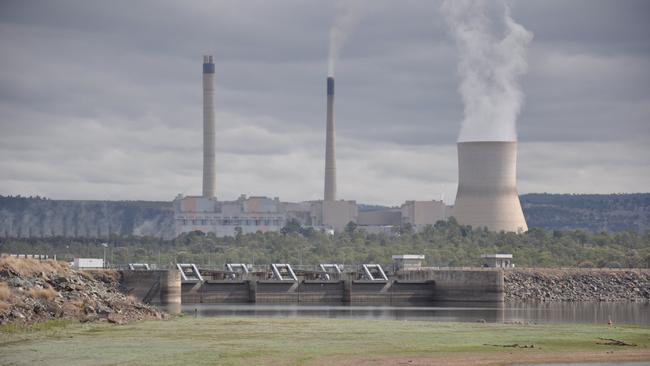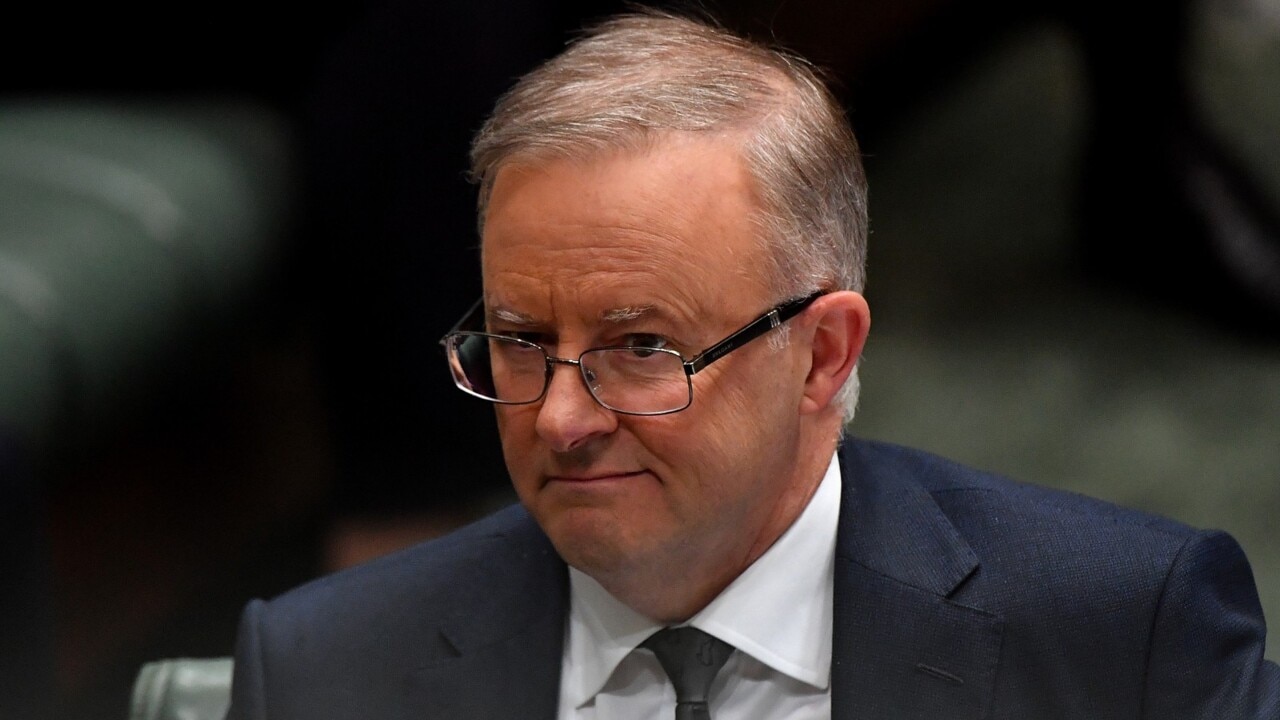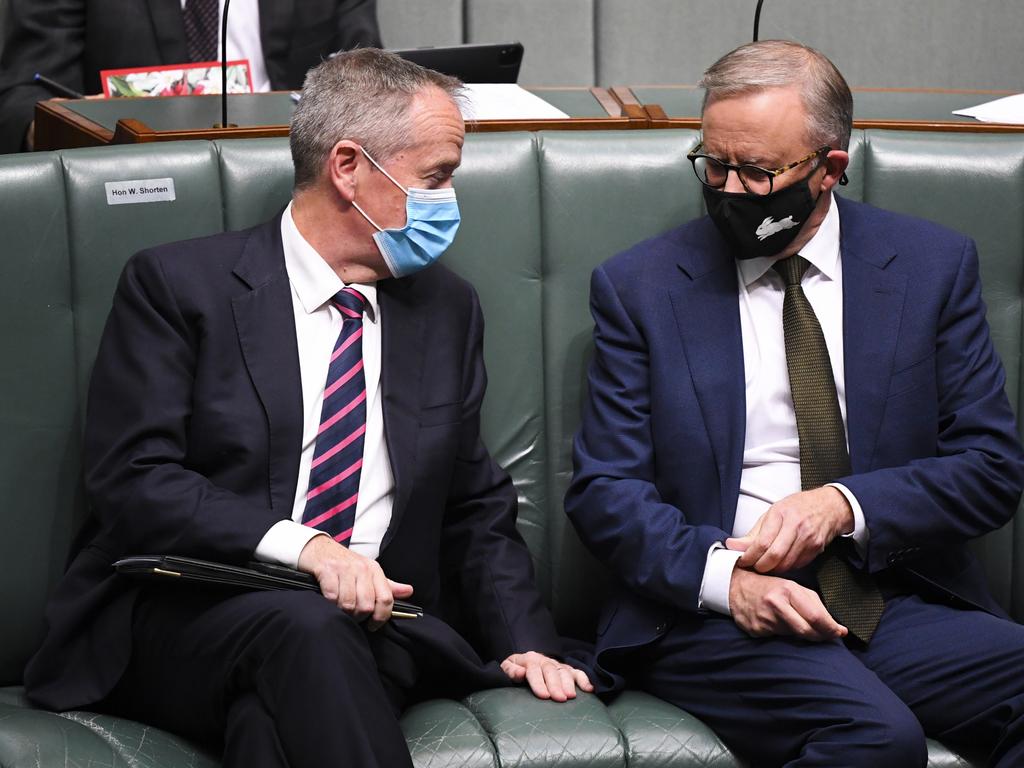Polluters stung if they don’t get going
The nation’s heavy polluters would have to work harder to reduce emissions and trade more in carbon offsets under an Albanese government.

The nation’s heavy polluters would have to work harder to reduce emissions and trade more in carbon offsets under an Albanese government, after Labor proposed to strengthen the “safeguard mechanism” setting a cap on pollution that, if exceeded, imposes extra costs on business.
Labor’s plan was backed by the Business Council of Australia and the Australian Industry Group, which pushed for close consultation to ensure export-exposed jobs were not put at risk, but swiftly condemned by the Coalition as a new carbon tax.
The safeguard mechanism – introduced by the Coalition in 2016 – applies to facilities that emit more than 100,000 tonnes of CO2e per year including operators in the mining, oil and gas, manufacturing, transport and waste sectors. About 215 facilities are covered.
Labor has proposed to amend the mechanism to reduce the emissions cap or “baseline” from 2023-24, embracing a proposal from the BCA. Under the Labor policy, the cap for heavy polluters would be reduced “in line with an aggregate annual emissions baseline reduction of 5Mt, reaching net zero by 2050”.
A Labor government would take advice from the Department of Industry and the Clean Energy Regulator as to “each facility’s share of the overall trajectory”.
Credits could be traded to allow an entity to offset its emissions to keep within the baseline, with failure to do so currently risking the imposition of hefty financial penalties. The policy is aimed at embedding a transparent net-zero target into the economy and sending a long-term signal to guide investment in low-emissions technologies.
The changes to the safeguard mechanism and plans to boost carbon farming are forecast to reduce emissions by an extra 7 per cent by 2030 on top of the existing business-as-usual projections.
Opposition climate change spokesman Chris Bowen on Friday warned the safeguard mechanism was not working because emissions had increased from entities covered by the scheme.

“As you know, the Abbott government told the Australian people they would introduce the safeguard mechanism to ensure carbon pollution by the biggest emitters wouldn’t go up. It isn’t working. Emissions have gone up from these facilities since it was introduced by 7 per cent,” he said.
The RepuTex modelling commissioned by Labor cited commonwealth projections showing emissions from entities covered by the mechanism would grow to 151Mt by 2030, or 27 per cent above 2005 levels.
The modelling found Labor’s policy to amend the mechanism would deliver 213Mt of abatement from 2023-30 and drive $1.68bn worth of industry investment. About 40Mt, or 19 per cent of all abatement, was projected to be in the form of domestic offsets.
It forecast that the increased demand for Australian carbon offsets would deliver new opportunities for the regions and the carbon farming industry, which it said would support about 1000 jobs by 2030.
Reforestation planting was tipped to be the largest source of new job creation, followed by rangeland regeneration, soil carbon, and savanna burning.
Mr Bowen said the proposal to overhaul the safeguard mechanism would trigger a scare campaign from the government. “The Liberals and Nationals will say all sorts of things about the safeguard mechanism. All sorts of scare campaigns will be waged,” he said. “Why does this national government think they know more about business than business knows about business?”

Energy Minister Angus Taylor told The Weekend Australian on Friday the safeguard mechanism was deliberately set at a level where it “avoids blowouts rather than drives reductions”.
“The reductions in our approach come from incentives through the Emissions Reduction Fund or through technological improvements,” he said. “Tightening the safeguard mechanism at 5 Mt a year is imposing a carbon tax on those businesses.
“They will have extra costs. They will pass it through to customers. They will shut. They will shed employees. They will do what they have to do. This is what carbon taxes do.”
But BCA chief Jennifer Westacott welcomed the “use of the existing safeguard mechanism and the Climate Change Authority to set emission budgets”. She said it would be “important for Labor to work closely with business on the detail, including measures to ensure export-exposed jobs aren’t unfairly put at risk by a tightening of the emissions baseline”.
Ai Group chief executive Innes Willox said industry had “long expected that sooner or later baselines would ratchet down to drive abatement”.
“Making that reduction firm and predictable can help underpin transformative industry investments,” he said.





